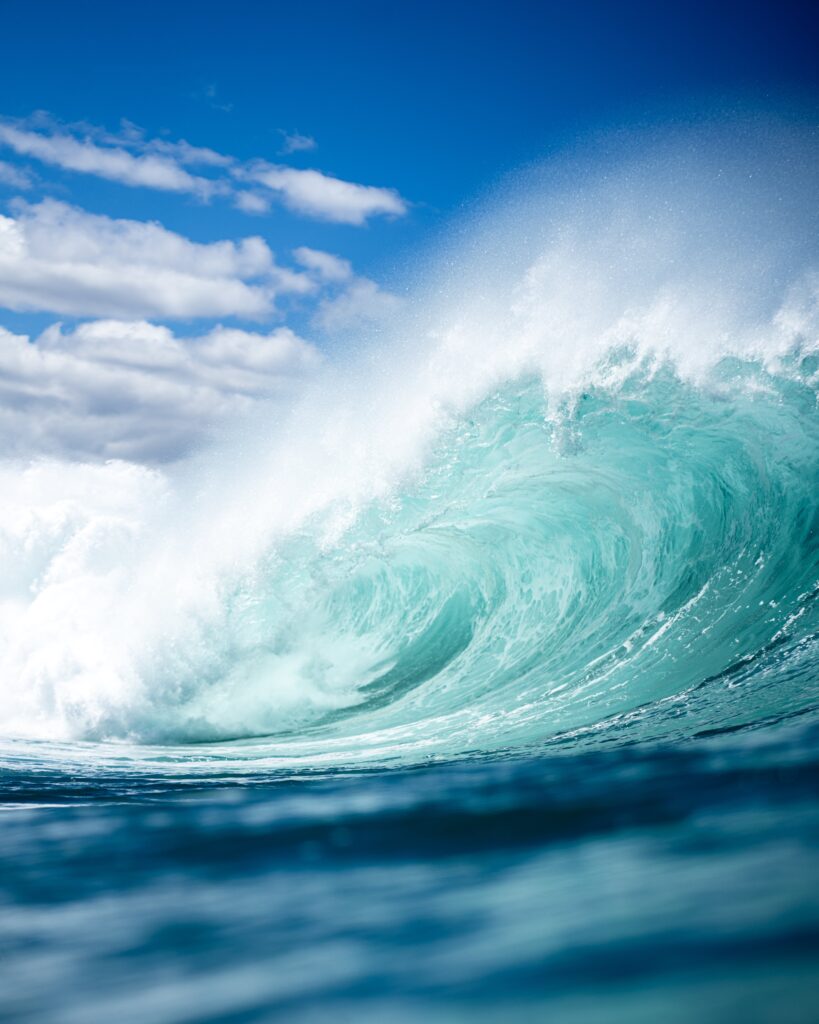
If you’re wondering about the right watering technique for your beloved bonsai tree, you’ve come to the right place. In this article, we will explore the topic of bottom watering and how often you should do it to ensure the health and vitality of your miniature masterpiece. So, sit back, relax, and let’s dive into the wonderful world of bonsai care!

Factors to Consider
Type of Bonsai Tree
The first factor to consider when determining how often to water your bonsai is the type of tree you have. Different species of bonsai have different water requirements. Some trees prefer more moisture, while others thrive in drier conditions. Research the specific needs of your bonsai tree to ensure you are providing the correct amount of water.
Potting Soil Mixture
The type of soil mixture used for your bonsai also plays a role in how often you should water it. Bonsai soil is typically fast-draining, allowing excess water to flow out of the pot quickly. This helps prevent overwatering and root rot. If your bonsai is planted in a soil mix that retains too much moisture, it may require less frequent watering.
Pot Size
The size of your bonsai pot affects how quickly the soil dries out. Smaller pots have less soil volume, which means they will dry out more quickly and may require more frequent watering. Larger pots, on the other hand, hold more moisture and can go longer between waterings. Consider the size of your bonsai pot when determining your watering schedule.
Environmental Factors
Environmental factors such as temperature, humidity, and sunlight also impact the watering needs of your bonsai. Hot and dry conditions will cause the soil to dry out more quickly, requiring more frequent watering. In contrast, cooler and more humid conditions will slow down evaporation and may result in less frequent watering. Consider the climate in which you live and the conditions in which your bonsai is kept when establishing a watering routine.
Signs That Your Bonsai Needs Watering
Visual Inspection
One of the easiest ways to determine if your bonsai needs watering is through a visual inspection. Look closely at the leaves and branches of your bonsai tree. If the leaves appear wilted or droopy, it is a sign that your bonsai is lacking water. Additionally, if the soil appears dry and pulls away from the edges of the pot, it is likely time to water your bonsai.
Touch Test
Another way to check if your bonsai needs watering is through the touch test. Gently touch the surface of the soil with your finger. If it feels dry to the touch, it’s a clear indication that your bonsai needs water. On the other hand, if the soil feels damp or moist, it is likely that your bonsai has enough moisture and doesn’t require immediate watering.
Weight Test
The weight of your bonsai pot can also provide clues as to whether it needs watering. When the soil is dry, the pot will feel significantly lighter compared to when it is moist. Lift and compare the weight of the pot when the soil is dry and then again after watering. This will help you develop a sense of the weight difference and determine when it’s time to provide water to your bonsai.
Steps to Bottom Water Your Bonsai
Prepare a Watering Container
To bottom water your bonsai, you will need a suitable watering container. Choose a container that is large enough to accommodate your bonsai pot. Fill the container with water, ensuring that it is deep enough to submerge the entire pot.
Submerge the Bonsai Pot
Carefully place your bonsai pot into the container, ensuring that the water level covers the pot up to the rim. Allow the pot to sit in the water for approximately 5 to 10 minutes, or until you see air bubbles stop rising to the surface. This indicates that the soil has absorbed enough water.
Allow Proper Drainage
After bottom watering, remove the bonsai pot from the water and allow it to drain thoroughly. You can place the pot on a wire rack or a drainage tray to ensure that excess water can escape. Avoid placing it on a surface that could be damaged by water or on a saucer that may cause water to collect and lead to overwatering.
Observation and Repeat
Observe your bonsai carefully after bottom watering to ensure it is receiving the right amount of water. If the soil still appears excessively dry after bottom watering, repeat the process until it is adequately hydrated. Remember to always keep an eye on the signs mentioned earlier to avoid either over or underwatering your bonsai.
Determining the Watering Frequency
Age of the Bonsai
The age of your bonsai tree affects its water requirements. Younger bonsai trees typically have more active growth and require more frequent watering. As bonsai trees age and their growth slows down, their water needs decrease. Consider the age of your bonsai when determining how often to water it.
Time of the Year
The time of year also plays a significant role in how often you should water your bonsai. During the warmer months of spring and summer, with increased sunlight and higher temperatures, your bonsai will likely need watering more frequently. In contrast, during the colder months of fall and winter, when evaporation slows down, watering can be less frequent.
Environmental Conditions
The environmental conditions in which your bonsai is kept should be taken into account. If your bonsai is kept indoors in a climate-controlled environment, it may have different water requirements compared to bonsai that are kept outdoors. Factors such as temperature, humidity, and airflow can influence how quickly the soil dries out and how often you should water your bonsai.
Type of Bonsai Tree
As previously mentioned, different types of bonsai trees have different water requirements. Research the specific needs of your bonsai tree species to determine how often you should water it. Some trees, like tropical bonsai, thrive in more humid environments and may require more frequent watering, while others, like deciduous bonsai, can tolerate drier conditions.
Potting Soil Mixture
The composition of the soil mixture in which your bonsai is planted affects its water needs. Bonsai soil is typically a mixture of several components, such as akadama, pumice, and lava rock. Each component has different moisture retention properties. Understanding the characteristics of your bonsai soil will help you determine how often to water your bonsai.
Pot Size
The size of your bonsai pot also influences how often you should water your bonsai. Smaller pots hold less soil and will dry out more quickly, requiring more frequent watering. Larger pots, on the other hand, can hold more moisture and can go longer between waterings. Consider the pot size when establishing a watering schedule for your bonsai.

Common Mistakes to Avoid
Overwatering
Overwatering is one of the most common mistakes made when caring for a bonsai. It can lead to root rot, fungal diseases, and a weakened tree. Avoid overwatering by allowing the soil to dry out slightly between waterings. Ensure that the pot has proper drainage to prevent water from pooling and causing an overly wet environment for your bonsai.
Underwatering
Underwatering is another common mistake that can harm your bonsai tree. When a bonsai doesn’t receive enough water, it can become dehydrated and suffer from wilting, yellowing leaves, and stunted growth. Monitor the soil moisture regularly and water your bonsai when it shows signs of needing hydration.
Neglecting Environmental Factors
Ignoring the environmental conditions in which your bonsai is kept can lead to incorrect watering practices. Factors such as temperature, humidity, and sunlight levels directly affect how quickly the soil dries out and how often you should water your bonsai. Stay aware of these environmental factors and adjust your watering schedule accordingly.
Using Incorrect Watering Techniques
Using incorrect watering techniques can also harm your bonsai. Avoid pouring water directly on the foliage, as it can lead to fungal diseases. Instead, focus on watering the soil directly. Bottom watering is a recommended technique for bonsai, as it allows the roots to absorb water efficiently. Use the steps outlined earlier to properly bottom water your bonsai.
Additional Tips for Watering Bonsai
Use a Moisture Meter
If you find it challenging to gauge the moisture level of your bonsai soil, consider using a moisture meter. These handy devices can provide accurate readings and take the guesswork out of determining when to water your bonsai. Insert the probe into the soil and read the moisture level displayed on the meter.
Avoid Waterlogged Soil
Ensuring proper drainage is crucial to prevent waterlogged soil, which can lead to root rot. Make sure your bonsai pot has drainage holes to allow excess water to escape. Additionally, avoid using heavy or dense soil mixes that can retain too much moisture. Good drainage is essential for the health of your bonsai.
Observe for Signs of Root Rot
Root rot is a common issue that arises from overwatering or poor drainage. Keep an eye out for symptoms such as brown or blackened roots, foul odor, or wilting leaves. If you suspect root rot, take immediate action by adjusting your watering practices, improving drainage, and if necessary, repotting the bonsai.
Consider Local Climate and Season
Take into account the climate in which you live and the seasons when watering your bonsai. For example, if you live in a dry, desert-like climate, you may need to water your bonsai more frequently than someone living in a more humid environment. Adjust your watering schedule according to the specific needs of your local climate.
Be Consistent with Watering Schedule
Consistency is key when it comes to watering bonsai. Develop a regular watering schedule and stick to it. Bonsai trees thrive in a consistent environment, and maintaining a consistent watering routine helps ensure their well-being. Avoid irregular watering patterns, as they can lead to stress and health issues for your bonsai.

Conclusion
Proper watering is essential for the health and vitality of your bonsai. Consider factors such as the type of bonsai tree, potting soil mixture, pot size, and environmental conditions when determining how often to water your bonsai. Signs such as visual inspection, touch test, and weight test can help you gauge when your bonsai needs watering. Follow the steps to bottom water your bonsai, paying attention to adequate drainage. Factors such as the age of the bonsai, time of year, environmental conditions, type of bonsai tree, potting soil mixture, and pot size will help you establish the appropriate watering frequency. Avoid common mistakes, observe additional tips, and be consistent with your watering schedule to ensure the health and longevity of your bonsai. With proper care and attention to watering, your bonsai will thrive and bring you joy for years to come.